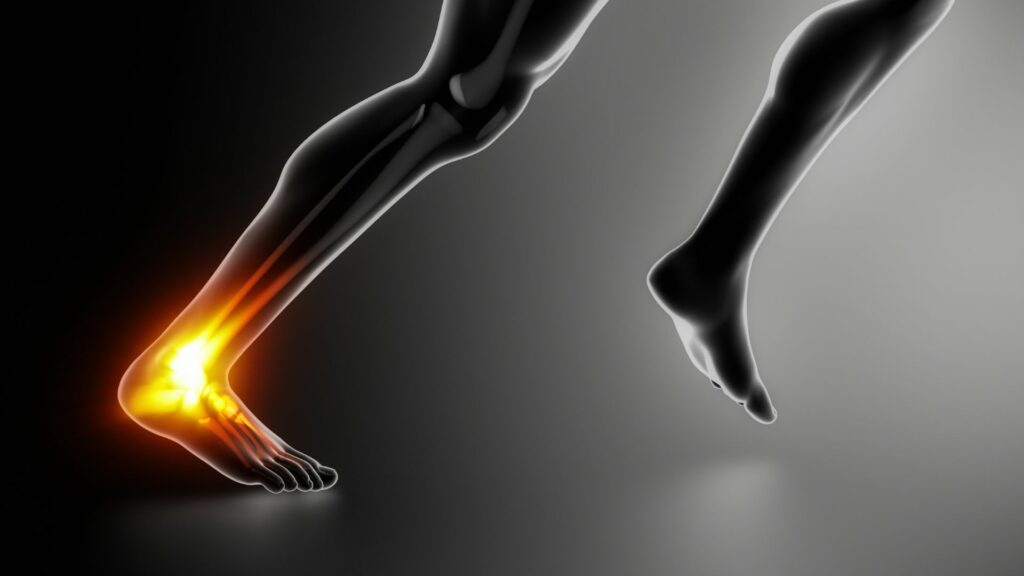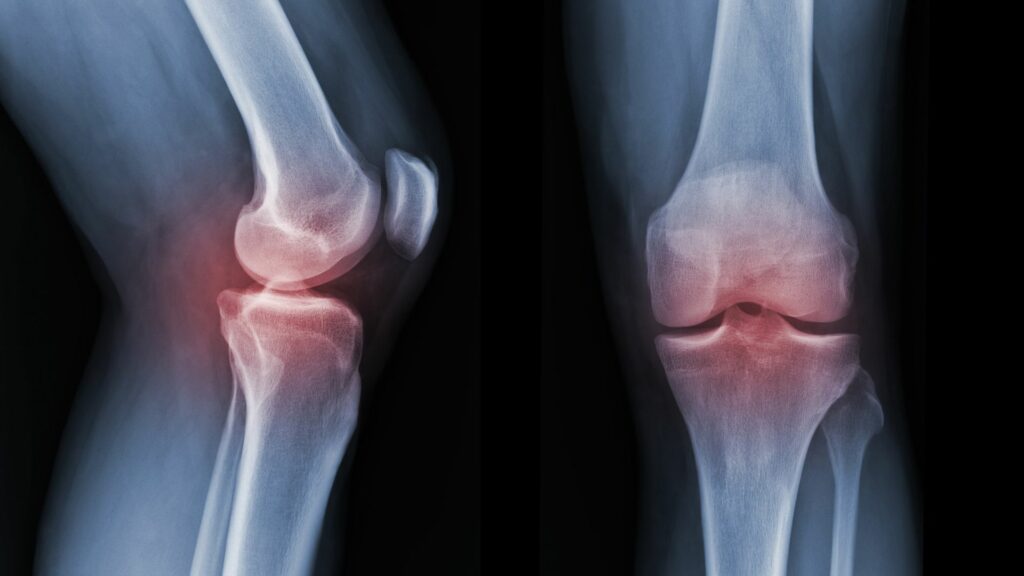Top Signs and Symptoms You’ve Suffered a Sports Injury
Whether you’re a weekend warrior, competitive athlete, or coach supporting a team, one thing is for sure: sports injuries happen. But what’s the difference between post-game soreness and a more serious issue?
Recognising the early signs and symptoms of most sports injuries is key to preventing further damage, reducing downtime, and returning to sport safely. Ignoring symptoms or trying to “push through the pain” can lead to chronic problems that linger for weeks, months, or even years.
Read on for the top signs and symptoms you've suffered a sports injury — and what to do next.
What are Sports Injuries?
A sports injury is any injury sustained during physical activity, training, or competition, which can be classified into different types of sports injuries . Most common sports injuries affect muscles, ligaments, tendons, joints, or even bones and range from minor acute injuries (like a mild sprain) to severe pain and injuries (like a torn ACL or bone fracture).

Common Types of Sports Injuries Include:
- Muscle strains (e.g. hamstring strain)
- Ligament sprains (e.g. ankle sprain, wrist sprains)
- Tendon injuries (e.g. Achilles tendon rupture or rotator cuff)
- Joint dislocations
- Stress fractures and other fractures or injuries
- Overuse injuries (e.g. shin splints, tendinopathy)
Which body parts are most at risk of sports injuries?
Some parts of the body are more prone to injury than others, especially in contact sports or high-speed, explosive movements.
High-risk areas of common sports injuries include:
- Knee Injuries: Prone to ACL tears, meniscus injuries, and patellar tendinopathy
- Ankle injuries: A Common site for sprains due to uneven ground or sudden direction changes
- Shoulder injuries: At risk of dislocation, rotator cuff injuries, and instability
- Lower limb injuries: Often affected by muscle strains, stress fractures, and shin splints
- Wrist Injuries: Susceptible to sprains in sports, with falls, or weight-bearing
What causes sports injuries?
There are many different types of sports injuries, however, many sporting injuries have common causes, which include:
- Falls or collisions in games or training
- Overtraining without enough rest or recovery
- Sudden changes in intensity or training load
- Poor technique or form
- Repetitive stress on the same muscle groups
- Improper equipment or inadequate warm-up
- Playing the same sport year-round without cross-training
The Top Signs and Symptoms of a Sports Injury
1 - Pain That Doesn't Go Away
DOMS (delayed onset muscle soreness) is normal after a workout, but persistent severe pain or sharp pain during or after activity is a red flag. Concerning signs include pain at rest, sharp pain during movement, or pain that increases with activity and doesn’t improve over a few days, which may be signs of a severe injury.
2 - Swelling and Inflammation
Swelling is your body’s natural response to injury, and can be quite common after an acute injury, but significant swelling or swelling that is prolonged is a sign of a serious injury.
3 - Reduced Range of Motion
This could be ligament damage, nerve involvement, or tendon or muscle tears.
4 - Visible Bruising or Discolouration
Bruising means bleeding beneath the skin, usually from torn muscle fibres or ruptured capillaries. This can be quite common in contact sports. However, if you have large-scale bruising, you should seek medical care through your physiotherapist.
5 - Weakness or Instability
This could be a torn ligament, nerve involvement, or tendon or muscle tears. It can be quite variable, but common injuries that have this may include knee pain due to an ACL or MCL sprain, broken bones, or dislocated shoulders.
6 - Numbness or Tingling Sensations
Pins and needles or loss of sensation is nerve involvement and should be treated immediately. It may indicate a dislocated joint or nerve palsy.
7 - Inability to Bear Weight or Use the Limb
This may be fractures, severe sprains or tears, or joint dislocations. If this is mixed with an obvious deformity around your injured body part, immediate medical attention is required; otherwise, there is an increased risk of further, more severe damage.
8 - Symptoms Persisting or Worsening Over Time
These are signs of overuse injuries and chronic injuries, and early intervention can prevent them from becoming long-term problems.
How Sports Injuries are Diagnosed
A thorough diagnosis is highly important in managing sports injuries and includes a series of imaging tests.
- A detailed history of how the injury occurred, training habits, and any relevant medical history
- A physical examination to assess joint stability, muscle strength, range of motion, and functional movement patterns
- Specialised orthopaedic tests to identify specific injuries, such as ligament tears or tendon damage
Depending on the suspected injury, your physiotherapist, doctor, or sports medicine physician may refer you for imaging of your injured joint or bone, such as:
- X-rays to rule out fractures or dislocations
- Ultrasound to assess soft tissue injuries, such as muscle tears or fluid buildup
- MRI scans to get a detailed view of ligaments, tendons, cartilage, and joint structures (especially useful for knee injuries or other parts of your musculoskeletal system)

Importantly, early evaluation by a sports physiotherapist can often identify the issue and lead to effective physical therapy without requiring imaging straight away. However, in cases where pain is severe, swelling is significant, or symptoms persist despite rest, diagnostic imaging helps confirm the diagnosis and guide treatment.
You do not need a referral to see a physiotherapist in Australia, so it’s an excellent first step in managing any suspected sports injury.
How a Physiotherapist Can Help
A qualified sports physiotherapist will:
- Assess your movement and function
- Identify underlying biomechanical risk factors or lack of use of proper equipment
- Provide manual therapy to help reduce swelling, exercise prescription, and pain relief techniques
- Create a return-to-sport rehab plan
- Help you address any previous injury concerns to avoid sports injuries in the future
At All Elite Physiotherapy and Performance, we have helped hundreds of athletes overcome injuries like ACL ruptures, Achilles tendon tears, and chronic stress injuries with tailored, evidence-based rehab programs focusing on your injured part of the body.
When to See a Doctor or Physio
If your symptoms last more than a few days, involve swelling, bruising, pain at rest, or interfere with daily movement or training, it’s time to seek professional help.
Early intervention not only shortens recovery time, but it also prevents minor injuries from becoming more serious injuries requiring surgery or extended time off sport.
Injuries are inevitable, but early detection and treatment are key. Listen to your body, heed the warning signs, and don't ignore the pain.
Book now with our team at All Elite Physiotherapy and Performance for an injury assessment and treatment plan for your sport and goals.
Frequently Asked Questions
What are the symptoms of a sports injury?
- Persistent pain
- Swelling
- Reduced movement
- Weakness
- Inability to use the limb normally
What are the 5 common sports injuries?
- Ligamentous Sprains, such as Ankle sprains
- Muscular strain, such as Hamstring strains
- Joint Shoulder injuries
- Overuse injuries, such as shin splints or stress fractures
- Other ligamentous ruptures, such as the Anterior cruciate ligament (ACL)
What are two signs your injury is serious?
- Inability to bear weight and persistent swelling
- Pain that doesn't improve with rest.
What are 4 causes of sports injuries?
- Falls
- Overtraining
- Poor technique
- Repetitive stress.
